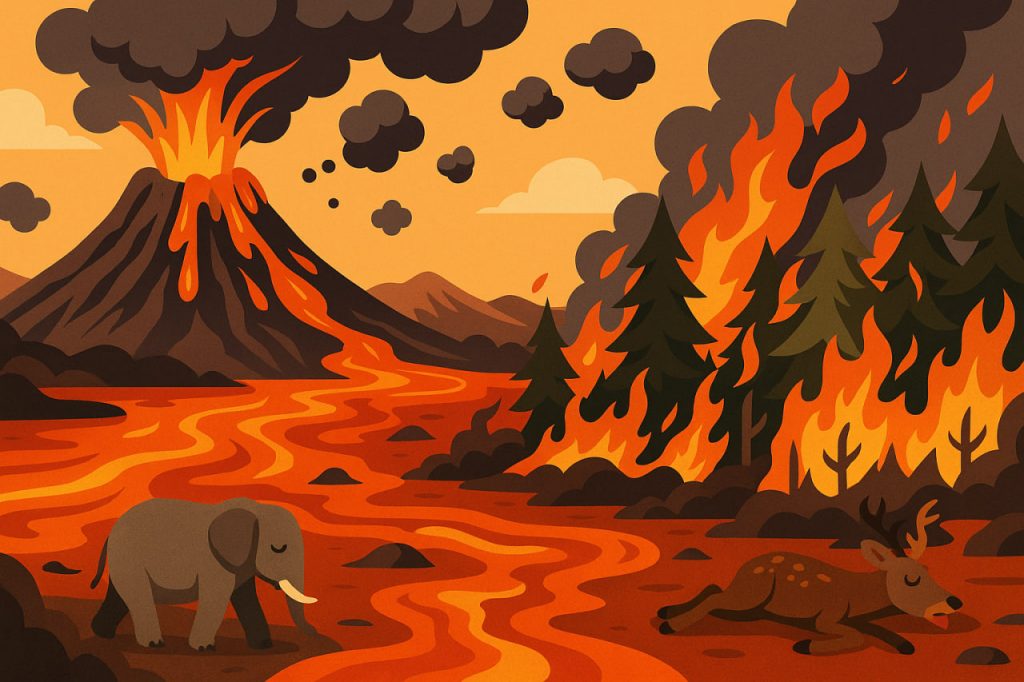The Siberian Traps are one of the largest volcanic provinces on Earth, located in Siberia, Russia. Around 252 million years ago, their massive eruptions lasted for nearly a million years, releasing enormous amounts of lava and gases. This event is considered the main cause of the Permian–Triassic mass extinction, during which about 90% of marine species and 70% of land species disappeared. If the Siberian Traps were to erupt again in modern times, the consequences would be catastrophic for the planet.
1. Gigantic Volcanic Eruptions
- Vast amounts of basaltic lava would cover huge territories, destroying landscapes, rivers, and ecosystems.
- Lava fields could stretch for thousands of kilometers, wiping out entire regions.
- Continuous eruptions could last for centuries, making recovery extremely difficult.
2. Release of Greenhouse Gases
- The Siberian Traps previously released enormous amounts of carbon dioxide (CO₂) and methane (CH₄) into the atmosphere.
- A modern eruption could trigger rapid global warming, raising Earth’s temperature by several degrees.
- This would accelerate climate change, melting ice caps and raising sea levels.
3. Toxic Emissions and Acid Rain
- Massive release of sulfur dioxide (SO₂) would lead to acid rain, destroying forests, soils, and aquatic life.
- Poisonous gases could cause respiratory problems in humans and animals.
- Agriculture would collapse in affected regions due to poisoned soils and water.
4. Collapse of the Biosphere
- Just like 252 million years ago, ecosystems would collapse on both land and sea.
- Ocean acidification would kill marine life, especially corals and shell-forming organisms.
- Species extinction could reach levels similar to or even worse than the Great Dying.
5. Global Famine and Human Crisis
- Agriculture would be devastated by ash clouds, acid rain, and climate instability.
- Food production would drastically decline, causing famine on a planetary scale.
- Economic systems would collapse under the pressure of mass migrations and resource wars.
6. Long-Term Geological and Climatic Effects
- The Siberian Traps eruption would fundamentally reshape Earth’s climate, oceans, and biosphere.
- Even after eruptions stopped, recovery could take hundreds of thousands of years.
- Humanity might not be able to adapt to such dramatic and prolonged changes.
Conclusion
If the Siberian Traps erupted again, the Earth would face an environmental catastrophe of global proportions. Massive greenhouse gas emissions, acid rain, and ecosystem collapse could replicate the conditions of the Permian–Triassic extinction, potentially threatening modern civilization itself.
Some people say that such an eruption is possible in the near future, citing the anomalous heating of Siberia as evidence, but there is no official data yet.
Glossary
- Siberian Traps – a vast volcanic region in Siberia formed by eruptions 252 million years ago.
- Permian–Triassic extinction – the largest extinction event in Earth’s history.
- Basaltic lava – dark volcanic rock that covers huge areas during eruptions.
- Acid rain – precipitation with high acidity caused by sulfur dioxide emissions.
- Ocean acidification – chemical changes in oceans due to excess CO₂.


